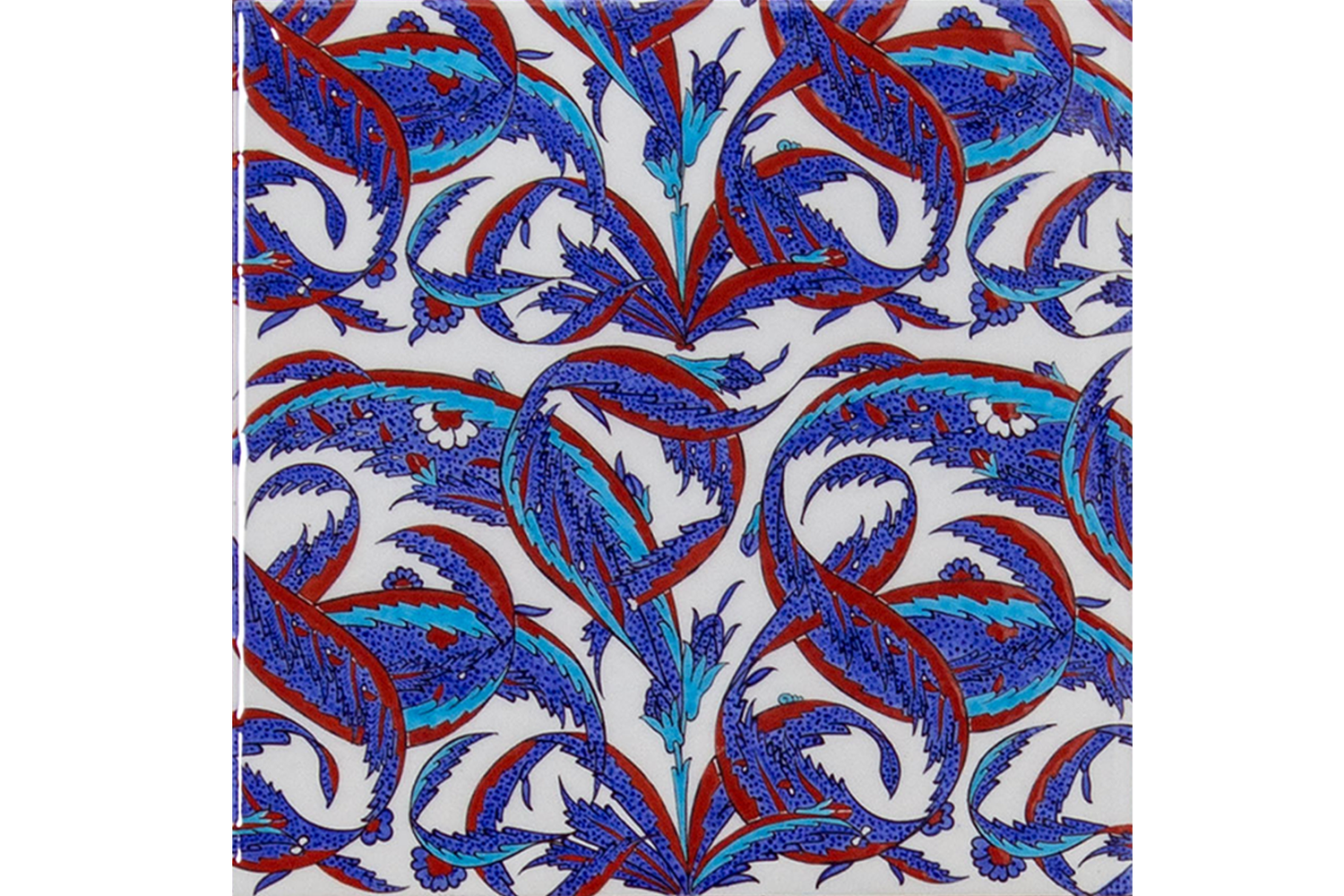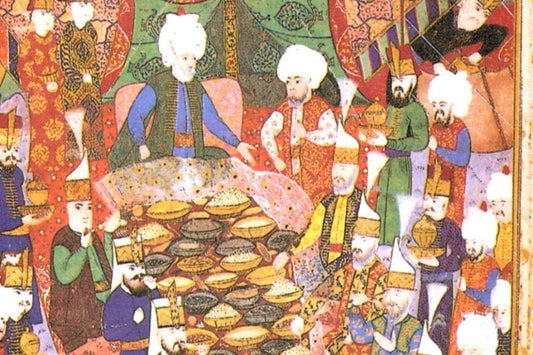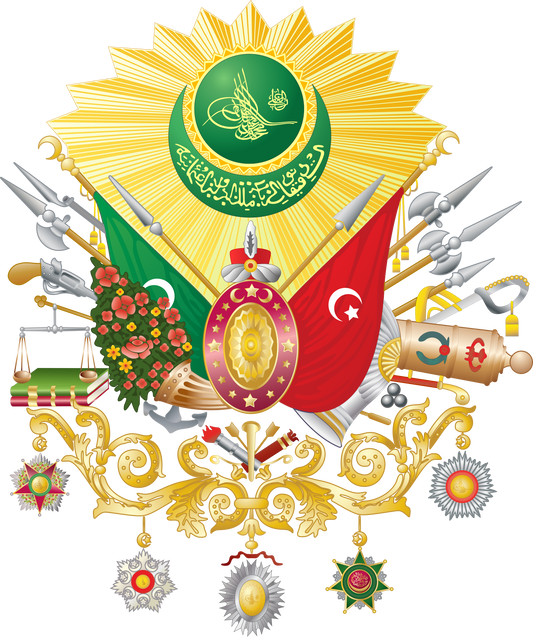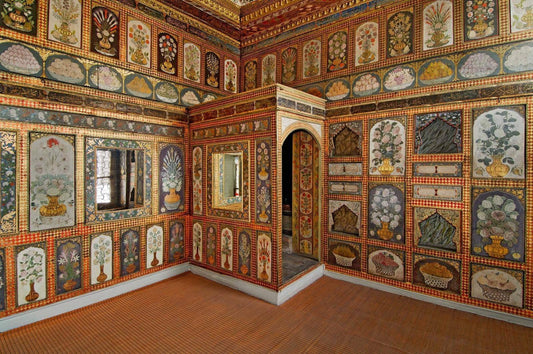The saz style first emerged as a form of drawing in Iran, not in ceramics, and its leading representative in the Ottoman Palace was Şahkulu, who was the head of the community of nakkaşan from 932/1526 until 1556, which is thought to be the date of his death.
The word "saz" is used in the 14th-century legend of Dede Korkut in reference to a forest. This is a fitting description for the abundance of overgrown foliage that Şahkulu brought from Iran and introduced to Ottoman art. Works attributed to the 15th-century Herat and Tabriz schools often featured bears, lions, and monkeys hidden among saplings and leaves. However, the Ottomans adopted two key elements from this forest, which they adapted into a decorative style: the saw-toothed leaves, known in Turkish as "hâçer" (dagger) because of their dagger-like shape and resemblance, and a plump palmette or rosette. The rotating movement of the dagger leaves contrasts with the immobile role of the rosettes, which generally serve as pivots in the design. To express the fusion of these two elements, this style could perhaps be called the "Saz Leaf and Rosette Style."
The saz style was not immediately adopted in artistic media outside of book art. One of the first structures to see the style applied freely is the tomb built by Sinan for Prince Mehmet, the favorite son of Suleiman the Magnificent. Here, the style is evident in the hand-carved window sashes and, more prominently, in the extensive colored glaze tiles. Two of the finest examples of the saz style are approximately the same date as the tomb of Prince Mehmet. These are two magnificent silk caftans, one with a black background, the other with a cream background. Both intricately decorated in an exuberant saz style, these caftans were long incorrectly attributed first to Sultan Bayezid II and then to Sultan Mustafa II. However, the date of Prince Mustafa's death suggests that the caftans were made sometime in the 1540s or early 1550s, which is consistent with the dating suggested for Iznik ceramics. (Atasoy Nurhan, "Iznik," p. 133)




